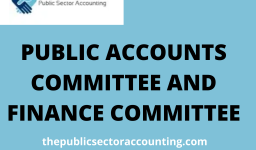public private partnerships – PPP
You are welcome to The public sector accounting guide, here we provide you anything concerning public sector accounting being questions, answers, and topics in public sector accounting and other related topics in Public sector accounting.
This guide of public sector accounting is focused on Public Private Partnerships (PPPs), after studying this guide or chapter of public sector accounting you should have achieved the following learning objectives:
- The concept of Public Private Partnerships (PPP)
- The role and responsibilities of parties to Public Private Partnerships (PPP)
- Public Private Partnerships (PPP) Process
- Public Private Partnerships (PPP) contract Management
Also, you should be able to answer the questions below:
- What do you mean by public private partnership?
- What is an example of public private partnership?
- What are the 3 main sectors involved in PPPs?
- What is the role of public private partnerships?
- What are the main principles of PPP?
- What are the disadvantages of PPP?
- What are the advantages of PPP model?
- What are the advantages of PPP protocol?
- What are the advantages and disadvantages of PPP?
- What are the objectives of PPP?
One major responsibility of government in a country is to provide infrastructure (both economic, social, and community infrastructure) and services in order to provide a basis for economic growth and development.
However, fiscal constraints experienced by the various governments have resulted in the development of a new approach to providing and financing public infrastructure and services.
This new approach involves combining private sector expertise and financing in a form of partnership in the provision of this infrastructure and services.
This public sector accounting guide or topic or chapter is going to deal with the Public Private Partnerships (PPPs) and parastatal organizations. And in this guide you are going to read about:
- Accounting for PPP agreement
- IPSAS 32 – Service concession arrangements: Grantor,
- Parastatal Organisation and
- Provision of Financial Administrative Act 2003, (Act 654) on public corporations.
-
Summary of Contents
THE CONCEPT AND OBJECTIVES OF PUBLIC PRIVATE PARTNERSHIPS – PPP
Here we are going to see the definition and ideas or the main general reasons behind public private partnerships or PPP. Now let steps into the concepts and objectives of public private partnerships which include the definition or the meaning of public private partnerships, objectives, and many more.
1.1 MEANING OF PUBLIC-PRIVATE PARTNERSHIPS – PPP
What do you mean by public private partnership?
Public private partnerships refer to all forms of the contractual arrangement between a public sector entity (known as contracting party) and a private sector party with the objective of providing public infrastructure and services to the public which would have traditionally been provided by the public sector, with the private sector party performing part or all of a governments service delivery functions, and assumes part or whole of the associated risks and reward over a significant period of time.
The risks assumed or share would involve financial injection and bring onboard expertise in carrying out the public private partnerships or PPP project.
The reward, on the other hand, would involve the private sector party receiving financial remunerations in accordance with predefined performance criteria and maybe in the form of receiving service tariffs or specified amount from the government budget in a form of periodic or contingent payment.
All PPP results in a contractual arrangement know as public private partnerships or PPP Agreements.
A PPP agreement is a formalized agreement between a public sector entity and the private sector party for the implementation of a PPP arrangement.
1.2 OBJECTIVES OF PUBLIC PRIVATE PARTNERSHIPS – PPP
What are the objectives of PPP?
Public-private partnerships (PPP) is carried out to achieve the following objectives:
- To encourage and promote increased private sector participation in the economic development of a country. Like Ghana
- To increase the availability of public infrastructure and services, and improve services quality and efficiency of projects.
- To increase the availability of financial resources, allowing the development of additional projects without recourse to public budgets
- To increase the efficiency of a project or reduce its costs, incorporating specific private sector technologies, know-how, management techniques, or innovative financial schemes;
- To allow funding structures that are more reliant on users and those directly benefiting from the project, thereby avoiding distortions generated by taxpayer funding through public budgets.
1.2 STAKEHOLDERS IN A PUBLIC PRIVATE PARTNERSHIPS – PPP ARRANGEMENT
The typical public private partnerships or PPP arrangement would have the following players
- Contracting Entity/Public Authority
This is the public entity that is ultimately responsible for the project and for the decision to carry out and design the public private partnerships or PPP scheme.
It includes government MDAs and MMDAs A, sub-vented agencies, government institutions, state-owned enterprises to the extent that they utilized public funds, public universities, schools colleges and hospitals, social intervention entities and any entity in which government or government entity have a controlling interest.
The contracting entity has the following responsibility;
- During the preparation of the scheme, the contracting entity is responsible for preparing the tender documents, managing the tender process or involve in direct negotiation, assessing the proposals submitted by the different bidders, selecting one proposal and formalizing the contractual framework.
- During the lifetime of the project, the contracting entity is responsible for the enforcement of the terms of the contract.
- In concessions, where there is a transfer of assets back to the public sector at the end of the contractual period, the contracting entity is responsible for arranging alternative management or operation of the services for the moment the transfer takes place.
- Public Private Partnerships or PPP Contractor / Private Party
This is the entity responsible for the development of the project in accordance with the terms specified by the contracting entity.
Is the main party responsible for delivering the services specified in the public private partnerships or PPP contractual framework, which can be provided by the public private partnerships or PPP contractor directly or by other third parties selected by the public private partnerships or PPP contractor.
The project public private partnerships or PPP contractor can be an existing company or be a special purpose company set up especially for the development of the project.
The former is often the case when the public private partnerships or PPP is structured as a project finance scheme ( that is a structure whereby the only guarantee for debt financing is the future cash flow expected from the project, without encumbering other assets of project sponsors).
- Public Private Partnerships Or PPP Operator
This is an entity that directly carries out the task under the public private partnerships or PPP project scheme. The project public private partnerships or PPP contractor can directly operate the infrastructure or where specific know-how is required (market or specialized technical knowledge), then an independent company can be brought on board to carry out the operation on behalf of the project public private partnerships or PPP contractor.
In such a case, the relationship between the public private partnerships or PPP operators in terms of capacity, level of services, or pricing policy must be clearly regulated in a specific contract.
- Public Private Partnerships Or PPP Financing Agents
Public private partnerships or PPP project scheme is usually financed from a private financing scheme.
Normally, the public private partnerships or PPP project requires an initial investment, which is later recovered through an income stream produced by the project returns. Therefore a finance scheme must be set up in order to compensate the cash flows over the lifetime of the project.
Basic sources of finance in a public private partnership or PPP project scheme may include the capital provided by the project public private partnerships or PPP contractor (equity), loans provided by bank (debt), and securities or bonds sold on capital markets as an investment product.





Leave a comment